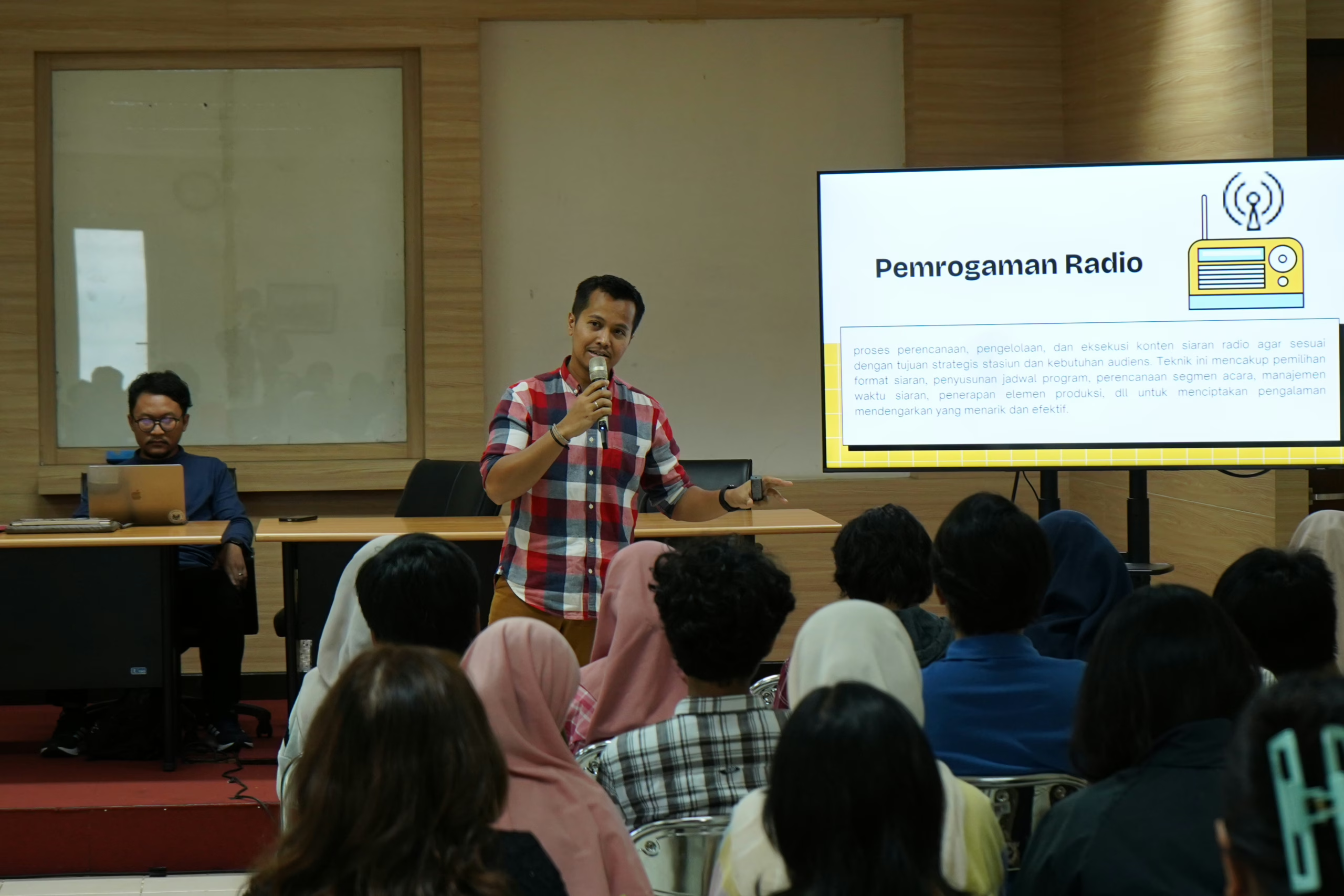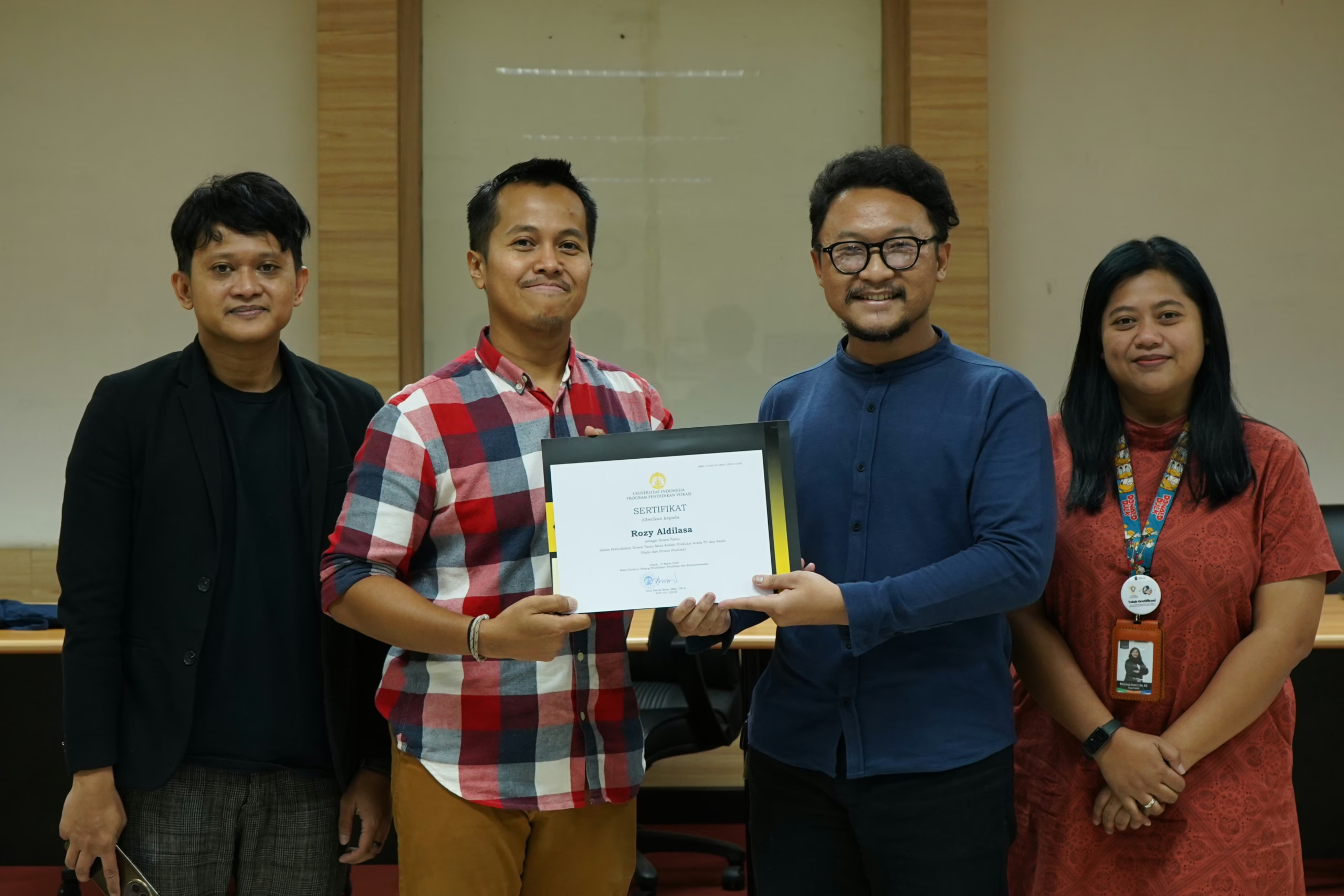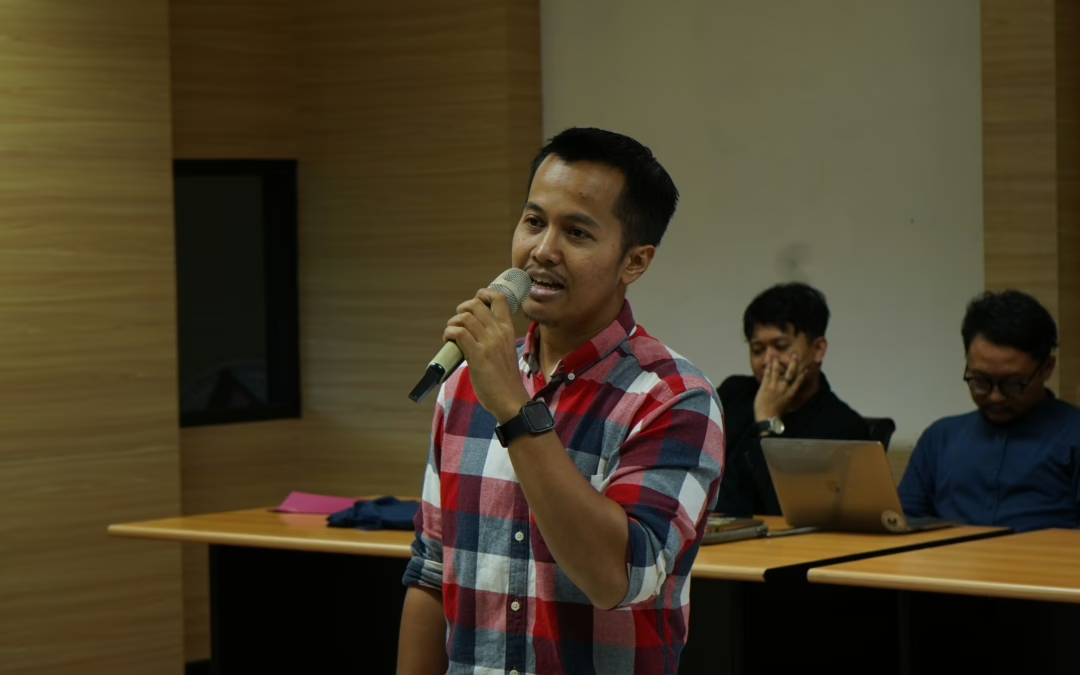Depok-Along with the major transformation in the broadcasting world that utilizes digital technology, currently the radio industry cannot only rely on analog/traditional broadcasts via AM/FM frequencies, but must also adapt and migrate to digital radio broadcasts. In the digitalization of the radio broadcast system, the sound quality produced will be much clearer compared to analog/traditional broadcasts, minimizing the potential for signal interference, and making it possible to reach audiences through various platforms. Radio must be able to utilize various digital platforms, such as social media, streaming, and podcasts to remain relevant, reach more listeners, and increase engagement with listeners. Based on a survey conducted by GoodStats in 2024 of 500 respondents, it showed that 52% of young people in the 18-25 age group still listen to the radio. This was conveyed by Rozy Aldilasa, a broadcasting practitioner who was once a member of Gen FM Radio Jakarta, while giving a lecture at a guest lecture for the Multimedia Broadcasting study program, Vocational Education Program, Universitas Indonesia (UI), on March 13, 2025. This guest lecture is integrated with the TV and Radio Program Production course.
Rozy explained that radio programming is a process of radio broadcasting activities carried out by programmers or program directors to arrange and organize broadcast materials, including selecting, scheduling, and presenting on the air. Therefore, continuous evaluation is carried out in order to form a radio broadcasting format with the aim of creating a radio image as planned. “This process includes selecting a broadcast format, compiling a program schedule, planning event segments, managing broadcast time, and implementing production elements. All radio programming activities are carried out at all times, from preparation to broadcasting,” said Rozy.
 (Photo: Rozy explains radio programming to students)
(Photo: Rozy explains radio programming to students)
Furthermore, Rozy explained the format in a radio called the presentation form. The format is planned in such a way according to the characteristics of each radio station. The format in radio also has several components, one of which is audience targeting. This marketing strategy is used to identify and reach certain audience groups based on various factors, such as Social Economic Status (SES), age range, profession, and location. Thus, through understanding the characteristics of the audience, companies or brands can create more relevant and effective content and campaigns on the radio.
No less important, the role of the announcer is also included in the component structure, so that they play a role in presenting the program in an interesting way and conveying information to listeners with a good communication style. Rozy said, “The role of the announcer is not only as a script reader, but also as a liaison between the program and the audience, and creating an atmosphere that is in accordance with the purpose of the broadcast. An announcer must have the flexibility to change the mood and intonation of the voice according to the type of event or situation. Several types of moods such as low, medium, and upbeat, each have different characteristics. In carrying out their role, an announcer is not only a conveyor of information, but also as an entertainer and communicator who is able to adjust the mood, and has interesting characteristics.”
Next, Rozy explained about the radio station format. The selection of this format helps attract the right audience and makes it easier for brands or advertisers to target their market. On popular radio, they usually already have characteristics in several formats. For example, Top 40 & CHR are suitable for the younger generation who follow trends; Adult Contemporary is more attractive to adult listeners; Urban Radio targets hip-hop lovers; and Alternative/Indie focuses on non-mainstream music.
 (Photo: Giving of a certificate of appreciation to Rozy after the guest lecture ended)
(Photo: Giving of a certificate of appreciation to Rozy after the guest lecture ended)
Finally, Rozy said that the radio industry also has a number of off-air events. These activities are carried out outside of radio broadcasts, such as concerts, meet and greets, festivals, and community events. The purpose of these activities is to strengthen the radio brand, increase engagement with listeners, and build relationships with clients and artists. Off-air events also play a role in providing direct experience to listeners and making them feel like they are part of the community. One of the off-air events held by Gen FM Radio Jakarta is Gen On Track Live, which presents a number of musicians, such as Raisa, Rony Parulian, Nadin Amizah, Ada Band, and others.
Head of the Multimedia Broadcasting Study Program, Peny Meliaty Hutabarat, S.Sos., M.S.M., said that the curriculum provided by the Multimedia Broadcasting study program focuses on broadcasting on TV and radio. Thus, various teaching activities provided also present experts or industry practitioners from TV and radio. “I hope that the teaching provided by these industry practitioners can be a forum for students to discuss and deepen the knowledge they are currently studying. The space for communication can be utilized well so that students are more prepared to enter the industrial world later when they do internships and graduate from UI Vocational,” concluded Peny.

